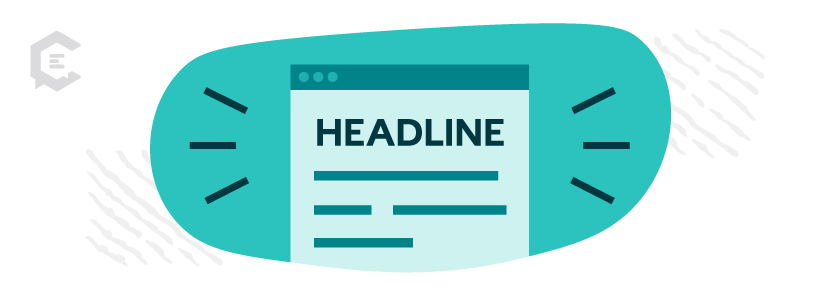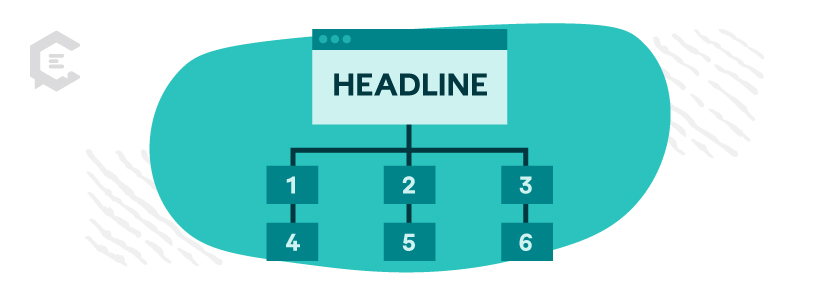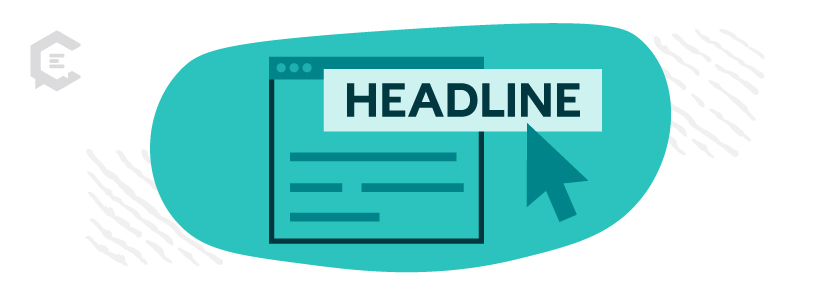Why are headlines important? Is writing blog headlines and fine-tuning them worth it? How do you write high-performing headlines, anyway?
These questions are worth considering if you want more clicks and meaningful engagements from your website content.
After all, the more compelling your headlines are, the better your posts perform.

The Power of Blog Headlines
Using powerful blog headlines will benefit you in many ways:
- You get more clicks. If your headlines clearly describe what your post is about and how it benefits the reader, you’ll get more clicks via search engines.
- You increase the virality of your content. Using headlines that elicit strong emotions (or intrigue) from readers makes it much more shareable. This increases your content’s virality.
- You get SEO value. Inserting your target keywords in your headlines helps search engines understand what your blog post is about. This, in turn, helps your pages rank better for relevant keywords.

6 Frameworks for Creating Amazing Blog Headlines
Use the tried-and-tested frameworks below to create fantastic blog headlines.

Headline Framework 1: Backed by Science
The ‘Backed by Science’ framework has A LOT of great things going for it.
It boosts the credibility of your posts, it’s attention-grabbing, and it makes your posts more authoritative and trustworthy.
When you add the phrase ‘Backed by Science” to your headlines, you hint at several unsaid messages, such as:
- Your content is legit and factual.
- You did due diligence to put together high-value content.
- Your content isn’t made up since it’s backed by science.
Examples of the ‘Backed by Science’ headline framework:
- How to Turn Your Site Visitors Into Buyers [Backed by Science]
- Backed By Science: How to Become a Better Entrepreneur
- 10 Writing Tips [Backed by Science] to Create Top-Notch Content
Headline Framework 2: Listicles
Listicle-type headlines achieve remarkable results because of their clarity, brevity, and scannability.
Readers love listicles since it tells them exactly what they can expect from a blog post. In fact, according to OptinMonster, 35% of readers prefer list-based headlines.
It allows the readers to scan the list to ensure a blog post contains the information they’re looking for without reading it from top to bottom.
Examples of the listicle headline framework:
- X Frameworks for Amazing Blog Headlines
- X Proven Tips Marketers Use to Double Their Site Traffic
- X-Point Checklist to Create Client-Winning Content
Headline Framework 3: Ultimate Guide
The ‘Ultimate Guide’ headline framework has a time-saving element.
Since it’s an ultimate guide, it’s supposed to contain all the information the readers need.
Busy people prefer reading ‘Ultimate Guide’ posts since it gives them easy access to information. They can avoid the hassle of visiting various sites and reading multiple blog posts just to get the information they need.
Examples of the ‘Ultimate Guide’ headline framework:
- Content Writing Ultimate Guide: Tips, Examples, FAQs, Etc.
- Ultimate Guide to Content Outsourcing for Mid-Market Companies
- Ultimate Guide to Writing SEO Articles (w/ Tips & Examples)

Headline Framework 4: The Secret to
Use ‘The Secret to’ framework to invoke your readers’ strong sense of intrigue and curiosity. Both are powerful emotional experiences that compel readers to click your article headline.
It makes your headlines so much more irresistible since almost everyone wants to be in on secrets.
Examples of ‘The Secret to’ headline framework:
- The One Secret to Writing Traffic-Generating Articles
- The Secret Gary V. Uses to Generate Viral Content
- The Secret to Content Marketing Success for SaaS Companies
Headline Framework 5: How-to
You and I have pain points. You can be sure your target audience has them, too!
That’s why publishing ‘How-to’ articles is a powerful content marketing strategy. You share walkthroughs, tips, and steps to help your readers solve their problems.
Examples of ‘How-to’ headline framework:
- How to Write High-Performing Articles without Breaking the Bank
- How to Update Your Old Blog Content in Minutes
- How to Win at Content Marketing Without Spending Thousands
Headline Framework 6: Questions
Questions are great because they’re non-intrusive and can stir your readers to relate to your content.
To illustrate the point, how would you feel about reading a line that says, “Leave your comments below,” versus “What do you think about X?”
The latter sounds non-threatening, doesn’t it?
It’s a harmless question, after all.
Another thing worth noting is that using questions is a great way to remind your readers of their pain points.
If your audience struggles with getting very little to no sign-ups, use the headline, “How Many Sign-ups Are You Getting Monthly?”
Reading your headline will remind your readers of their frustrations. As a result, they’ll want to read your post, hoping it contains solutions to their problems.
Examples of the ‘Question’ headline framework:
- How on Earth Do I Produce Traffic Generating Content?
- What’s the Best, Most Affordable Strategy to Make Money Online?
- When’s the Best Time to Post Articles or Social Media Content?

How to Choose the Correct Article Headlines
Now that you have several headline frameworks in your arsenal, it’s time to decide which framework to use.
While there is no one-size-fits-all answer to this question, considering these points will help:
- Your readers’ frame of mind. Are you serving your content to readers who are eager to buy? Or to those who are just casually surfing the web? Your headline format should match your readers’ frame of mind. If they’re ready to buy, you’d be better off using the ‘How to’ framework than a headline that merely talks about trends.
- Your business goals. If you want to improve your brand visibility, consider using headline frameworks that increase the virality of your content. You’ll be better off choosing something provocative, such as ‘The Secret to’ framework. On the other hand, if you’re looking to get more signups, using the ‘How-to’ framework is with considering.
- Your direct competitors’ top pages. According to SEMRush, 41% of marketers said analyzing their competitors influenced their success. That’s how crucial competitor research can be for your marketing campaigns. Uncovering your competitors’ high-performing pages tells you which headline framework works better for your readers. For example, you should follow suit if their case study-type headlines get tons of shares. Chances are, you’ll also get lots of shares since you’re targeting the same demographics as your direct competitors.
Frequently Asked Questions
1. How do you write a good headline for a blog?
Consider these points to come up with good headlines for your blog:
- Use digits, numbers, and lists
- Highlight the benefit your readers can enjoy from reading your blog
- Use power-words
- Use words that instill a sense of urgency
- Consider what matters to your readers
- Include questions your readers often ask
2. What is an example of an article headline?
Below are examples of article headlines:
- The Secret to Getting 100K+ Organic Traffic in 3 Months
- Content Creation Ultimate Guide for SaaS Companies
- X Top Tools for Creating Powerful Headlines
- How EXACTLY Do You Create Traffic Generating Headlines?
- Not Getting Enough Organic Traffic? Follow These X Tips
3. How to write SEO-friendly headlines?
Here are a few ways to write SEO-friendly headlines to start driving organic traffic to your website:
- Include your target keywords in your headlines.
- Mention your target keywords somewhere at the start of your headlines.
- Align your headlines’ angle with the headlines of the top-ranking pages on the SERPs for your target keywords.
- Keep your headlines between 55 to 60 characters.
Mastering the Art of Blog Headlines
You need compelling headlines to create content that generates organic traffic, engagements, and conversions.
The blog headline tips and frameworks shared above are reliable and used by content experts. So, remember to integrate them into your content creation process.
If you don’t have the time to fine-tune your blog headlines or create content for your blog, reach out to ClearVoice.
ClearVoice has reliable, professional, and skilled content experts who can create sales-generating content marketing campaigns for your enterprise.
Reach out to ClearVoice and speak with a content specialist today about your content goals.



